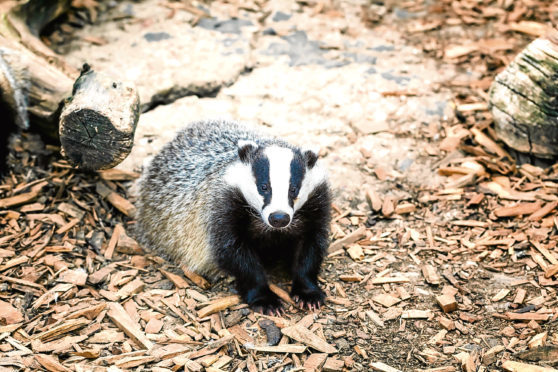I have been reading the runes in some of the quieter backwaters where agriculture and nature cohabit (and sometimes annoy each other the way neighbours sometimes do). And having read and thought about what I’d read, a troubling question began to take shape in my mind: how long will it be before the British Government starts culling badgers in Scotland as part of what passes for its strategy to control bovine TB in England?
Far-fetched, do I hear you ask. Well, maybe. Possible? Oh yes. So here’s what’s going on. Culling badgers in the south-west of England began in 2014, when 615 badgers were killed. The Department for Food, the Environment and Rural Affairs (Defra) thought it was such a good idea that in 2016 they killed more than 10,000 badgers, and last year they killed 19,274. There is a problem with the strategy. It doesn’t work.
In 2014 the number of cows killed because of bovine TB was 27,474, and last year it was 42,000 because the disease in cattle keeps spreading. Yet this year, Defra is examining plans to expand the areas of the badger cull, as part of a review of its strategy.
Last month, the Farmers Weekly reported that it would include English counties where cattle are at low risk from contracting bovine TB, under a headline which read: “Defra could extend badger cull across all England”.
This was a response to Defra’s announcement of a three-month consultation about culling badgers in counties as far from the disease hotspots as Kent in the south, Norfolk and Suffolk, and Northumbria and Cumbria in the north.
According to the consultation document: “If approved, a licence in the ‘low-risk area’ of England would allow farmers or government officials to trap badgers in cages and shoot them.”
This was the point at which my reading of the runes in those quiet backwaters of rural England began to alarm me. The trouble with using bureaucratic inventions like county boundaries to formulate government policies that affect wildlife is that the relevant wildlife doesn’t know the boundaries exist. They don’t care whether they are in Scotland or England because they don’t know that such places exist. They aren’t Scottish badgers or English badgers, they’re just badgers, doing what badgers do.
They don’t know what bovine TB is, they don’t know why it’s a problem and the only thing that concerns them is whether there is suitable terrain for a badger sett and suitable habitat for badger food. The idea that badgers from, say, Northumbria and Cumbria, would never cross the border is a little far-fetched (it must happen hundreds of times a night), as is the idea that if Northumbria and Cumbria did become part of the cull-zone, badgers in the Borders or Dumfries and Galloway would be exempt.
As luck would have it, there is ample scope for cross-fertilisation. The last national survey of badger distribution in Scotland was carried out by Scottish Badgers from 2006-2009. The areas of the highest estimated densities in the whole of Scotland were – guess where? – the Borders and Lothian. The areas of moderately high estimated densities include – guess where? – Dumfries and Galloway. Oh, and Fife.
Badgers are treated appallingly by people. Badger baiting with dogs is the most grotesque of all but the toll it takes is nothing compared to 60,000 badgers a year that die on British roads; and as if that were not slaughter enough, we have now invented the outrage that is the badger cull in the name of eradicating bovine TB by 2030.
If only more people in government would read The Wind in the Willows, they would perhaps understand better the futility of it all. For the Badger says to the Mole: “Very long ago, on the spot where the Wild Wood waves now, before ever it had planted itself and grown up to what it now is, there was a city – a city of people, you know. Here, where we are standing, they lived, and walked, and talked, and slept, and carried on their business. Here they stabled their horses and feasted, from here they rode out to fight or drove out to trade. They were a powerful people, and rich, and great builders. They built to last, for they thought their city would last forever.”
“But what has become of them all?” asked the Mole.
“Who can tell?” said the Badger. “People come – they stay for a while, they flourish, they build – and then they go. It’s their way. But we remain. There were badgers here, I’ve been told, long before that same city ever came to be. And now there are badgers here again. We are an enduring lot, and we may move out for a time, but we wait, and are patient, and back we come. And so it will ever be.”
